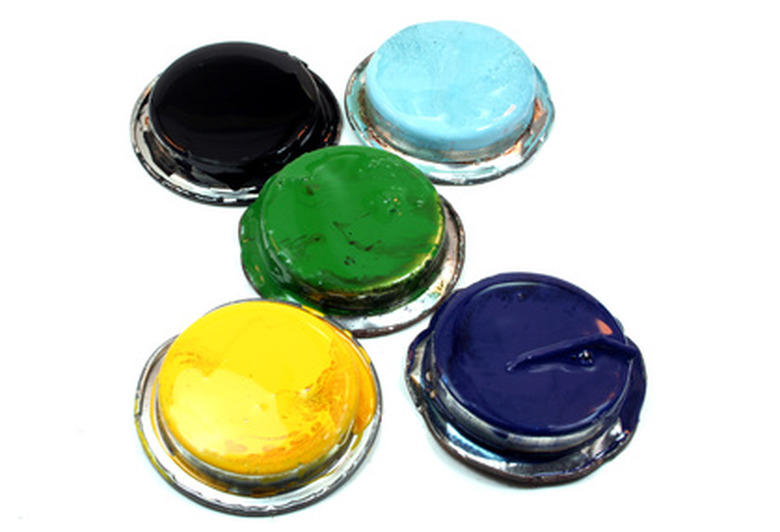What Is Acrylic Latex Paint?
The word "latex" refers to rubber in one form or another. However, many so-called latex paints use resins that are not latex, which has led the industry towards more accurate terms such as "water-thinned" or "water-reducible." If a paint uses latex in its name, it is usually paired with "acrylic," i.e. "acrylic latex." This more accurately describes the use of plastic resin made of acrylics or polyvinyls instead of rubber.
Acrylic Plastic Varieties
Acrylic Plastic Varieties
Acrylic latex paint is one of a number of water-based paints. It is 100 percent acrylic latex, and is regarded as the best-quality latex paint. Vinyl acrylic latex paints are the most popular acrylic latex paints on the market, as of 2010. Vinyl acrylic latex paint is the most economical because it uses a synthetic polymer, or plastic, as the binder. There are a numerous synthetic polymers that are used for various applications. One hundred percent acrylic resins costs twice as much as vinyl, so paint companies try to balance the two to keep costs down.
Environmental Advantages
Environmental Advantages
Latex paint, especially acrylic latex paint, has environmental advantages over oil-based paint. The lack of oils mean cleaning solvents are not required. Instead, brushes, sprayers, pans and drips can be simply cleaned with water and, if needed, mild detergent. Latex acrylic's advantages include superior adhesion, breathability, color-retention, flexibility, opacity (coverage) and washability.
Acrylic Latex Shortcomings
Acrylic Latex Shortcomings
Acrylic latex paint does have its limitations. Since the base of any latex is water, there is poor adherence to glossy or shiny surfaces. Likewise, latex's water content makes it unsuitable for unprimed steel, where the water base can cause rust. Additionally, that water base can raise the grain on unprimed wood, unless the paint is specially formulated as a primer.
What's in a Name
What's in a Name
Latex paint is actually a misnomer, because there is no real latex rubber in latex paint. Latex is a natural rubber product, originally produced from a Brazilian rubber tree (Hevea Brasiliensis). Now, latex is mainly produced in Southeast Asia. The sap of the Hevea trees is the basis for real rubber latex, which is used in latex gloves. This natural latex rubber does not go into paint. Instead, synthetic polymers that look like natural latex are used, but their chemical makeup and properties are very different than that of latex rubber.
Acrylic Latex Versatility
Acrylic Latex Versatility
Latex paint is popular with amateur and do-it-yourself painters. It is easy to use, and cleans up effortlessly with soap and water. Acrylic resins in the paint spread evenly and emit less odor than oil-based paints. Latex is thin, and therefore shows brush strokes, but multiple coats take care of any imperfections. Acrylic latex paint is available in a wide variety of finishes, from flat (no gloss) to high gloss, and different substances can add texture and contrast to a finished job. Acrylic latex dries in only a few hours as opposed to days with oil-based paint. On the other hand, latex paint takes weeks to completely cure, and is easy to stain or damage during that time.
